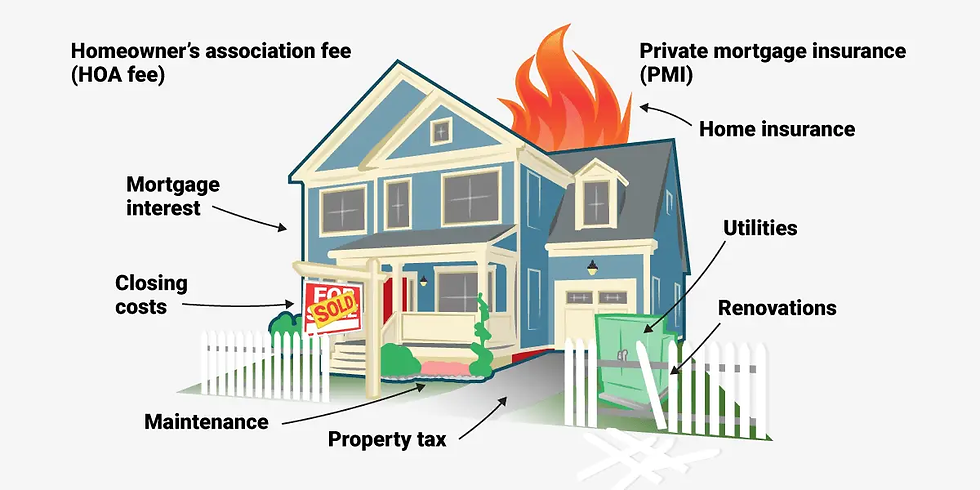Bay Area Home Prices: What 40 Years of Data Can Teach Us About Buying Smart
- Peyman Yousefi
- May 30, 2025
- 2 min read
Updated: Jun 3, 2025
If you’ve ever tried to time the real estate market in the San Francisco Bay Area, you know it feels a bit like predicting the next tech unicorn—everyone wants to, but very few get it right. So instead of guessing, why not look at the data?
This post breaks down nearly 40 years of Bay Area home price trends using historical data across 11 counties—highlighting major cycles, downturns, and recoveries to reveal patterns that can inform smarter real estate decisions today.

The Big Picture: Prices Go Up… But Not in a Straight Line
Yes, Bay Area home prices have increased dramatically over the long term—but not without some big dips along the way. Think of it like hiking a mountain range. The overall climb is steep, but there are plenty of valleys.
Here are the main takeaways:
Long-Term Gains Are Real
From 1995 to 2001, home prices almost doubled (+96%).
From 2012 to early 2020, during the post-recession tech boom, prices grew by a staggering 121%.
Even during the pandemic (2020–2022), we saw another +42% surge due to low interest rates, remote work, and limited supply.
But Downturns Happen Fast
The 2008 financial crisis was the worst drop: prices fell by 46% between 2007 and 2011.
More recently, between Spring 2022 and Spring 2023, prices dropped 14% as mortgage rates spiked.
Why It Matters: Drops Hurt More Than They Seem
Here’s something most people don’t realize: a 20% drop in home value requires a 25% increase to break even. Why? Because you’re working from a lower base. This is a common trap for buyers trying to “wait for the dip.”
Even small declines can have outsized impacts on return timing, especially if you’re not planning to stay in the home for at least 5–7 years.
Real Estate Moves in Cycles—Here's What They Look Like
The chart reveals repeated boom-bust cycles:
Period | Market Trend | % Change |
1990–1995 | Post-boom decline | -5% |
1995–2001 | Tech rise | +96% |
2001–2002 | Dot-com bust | -5% |
2002–2006 | Housing bubble | +77% |
2007–2011 | Crash | -46% |
2012–2020 | Tech + recovery | +121% |
2020–2022 | Pandemic surge | +42% |
2022–2023 | Rate-driven correction | -14% |
2023–2025 | Modest rebound (projected) | +14% |
The point? Every crash was followed by a recovery—but those who held through or bought during downturns were the real winners.
What Should Buyers and Sellers Do Now?
Here’s a simple strategy: Don’t try to time the market—try to understand it.
If you're a buyer, the Spring 2023 dip created rare opportunities. Mortgage rates have increased, but so has buyer leverage—less competition means more negotiation room.
If you're a seller, pricing correctly is key. Today’s buyers are smarter, more cautious, and very data-driven. Homes priced according to real market value are still moving fast.
Final Thought: What 2025 May Look Like
According to Compass projections, the market is already rebounding in 2024–2025 with a projected +14% gain from the 2023 bottom. With economic stability returning and inventory still tight, Bay Area real estate remains one of the most resilient long-term investments in the U.S.

Sources:
Compass Real Estate: Very Approximate, Smoothed-Out Schematic of Bay Area Median House Sales Price Changes since 1984
California Association of Realtors (CAR), NorCal Regional MLS
U.S. Federal Reserve Mortgage Rate Data
CoreLogic Home Price Insights
Case-Shiller Home Price Index (S&P)




Comments